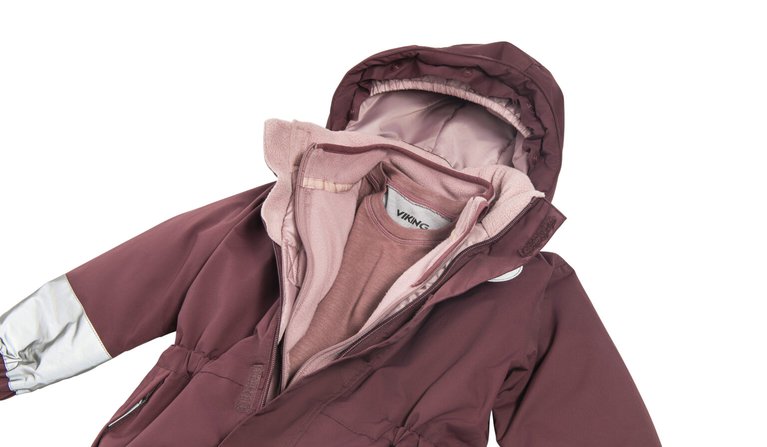
Cart is empty

With the first frost and snow, the eternal question of parents becomes relevant - how to dress a child in winter? So that the clothes and shoes are easy to put on and take off, keep the child warm without sweating, keep their feet warm and dry, etc.
Let's try to figure it out.
The information below is a mix of several sources, including personal experience, manufacturer recommendations, various articles, reviews from our customers, friends, and relatives.
So, to dress your child properly in the cold weather, you need to answer the following questions:
Now that you have answers to these questions, it will be easier for you to choose the appropriate clothing for your child.
Temperature -0 °C – 5 °C. Active winter leisure.
At this temperature and for active outdoor activities, dress in layers, but without an intermediate layer. Thermal underwear and outerwear with 150 - 200 grams of insulation should be enough.
For more cold-sensitive children, you can add a microfleece shirt under their clothing, but it is recommended to try without it first to see if they are warm enough. If they are still cold, then add it. However, a dense fleece shirt would be too much.
If you have a warm jacket with 300 grams or more of insulation, then you do not need an intermediate layer, as your outer jacket is warm enough and you may become too hot.
Temperature range: -0 °C – 5 °C. Passive winter leisure.
Practically the same recommendations as in the previous paragraph apply, with the exception that there is no need to wear fleece thermal underwear under 300-330 grams. Otherwise, it will be too hot. An exception may be for children sitting in a stroller, but it is better to go out without fleece at first and check if the child is warm rather than the other way around.
If the upper clothing is 180-200 or 220 grams, then additional fleece clothing is necessary as needed. Also, check how warm the child is without fleece clothing and if it seems chilly, then put it on.
Temperature -5 – 15 C. Active winter leisure.
At this temperature, it is still important to dress in layers, but you can skip the thickest insulating layer. Thermal underwear with an insulating layer of 100 -150 grams and a windproof and waterproof outer layer are usually enough for active outdoor activities.
For children, it is recommended to dress them in the same way as adults, with the addition of warm socks, gloves, and hats. It is important to take frequent breaks and move around to maintain warmth.
Temperature -5 – 15 C. Passive winter leisure.
At this temperature and for passive outdoor activities, you can dress in layers, but without the thickest insulating layer. Thermal underwear with an insulating layer of 100 - 150 grams and a windproof and waterproof outer layer should be enough.
For children, it is recommended to dress them in the same way as adults, with the addition of warm socks, gloves, and hats. It is important to check regularly to see if they are warm enough and take breaks indoors to warm up as needed.
Temperature -15 -20 C. Active winter leisure.
At this temperature and for active outdoor activities, it is important to dress in layers. First, put on thermal underwear (top and bottom), then add an insulating layer of fleece or down, and finish with a windproof and waterproof outer layer. Make sure that all layers fit well, but are not too tight, as air circulation is important for warmth.
For children, it is recommended to use the same layering system, but with additional attention to their extremities. Warm socks, gloves, and hats are essential to keep kids warm in the cold. It is also important to take frequent breaks and move around to keep blood flowing and maintain warmth.
Temperature -15 -20 C. Passive winter leisure.
When spending time outdoors in the cold at this temperature without being too active, dressing in layers is still important. However, you can skip the insulating layer and just wear thermal underwear with a windproof and waterproof outer layer.
For children, it is recommended to dress them in the same way, but with the addition of warm socks, gloves, and hats. It is important to check regularly to see if they are warm enough and take breaks indoors to warm up as needed.
Share on social media!